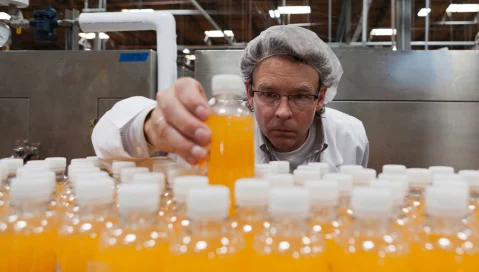From Guessing to Measuring: Relating Physics to Your Factory
From Guessing to Measuring: Relating Physics to Your Factory
From Guessing to Measuring: Relating Physics to Your Factory
10 Mai 2017
Aptean Staff Writer
Recently, I came across a best-selling book on the history of physics and was intrigued by the many stories of discovery over the centuries, but equally interested in the challenges of what we have yet to understand. In the 4th century B.C., ancient Greek philosopher Democritus postulated that the world is made up of atoms, particles too small to be seen, which are the building blocks of all matter. The next 2,300 years were filled with competing ideas about the nature of the universe, but it wasn’t until the 20th century that this “Atomic Theory” was finally confirmed.
The beginning of the last century was the dawn of a new revolution, unlike others before. Industries were developing methods of mass producing goods and delivering to market more efficiently to drive down the cost per unit. Governments were finding new ideologies, nations were preparing for war, and technology was developed to gain strategic and tactical advantages. It is clear that science was moving beyond millennia of observation and intuition into an age of experimentation and measurement. It was in 1905 that a young Swiss patent clerk’s ideas would fundamentally change the way we understand the universe.
This young man was Albert Einstein, and he did what no one over the millennia has been able to do: confirm that atoms in fact existed. Until this time, scientists could not figure out how to measure an atom, much less view one. Einstein’s solution was simple. He would measure the amount of wiggle that particles like pollen or dust exhibit while in a fluid. Basically, these molecules vibrate and drift while in suspension, and - by measuring this amount of movement or drift, you could calculate the size of an atom based on their collisions, thus confirming 2,300 years of intuition.
As a result of Einstein’s confirmation of the atom, photoelectric effect, and the theories of general and special relativity, quantum physics emerged as a new field with a focus on understanding sub-atomic particles. At this smaller-than-the-atom perspective, things do not occur intuitively. In fact, much of classical physics principles no longer apply, as observation and logic alone could not be used to understand this quantum level. Measurement and mathematics emerged as the best way to unlock further understanding.
Likewise, in the second half of the 20th century, Japanese engineers were developing methods to improve efficiency in their manufacturing plants in order to rebuild their war-torn nation’s economy. Lean manufacturing, as we know it today, is the combination of those techniques and the use of quantitative objective measurements by American engineers focused on understanding and refining manufacturing processes. Years later, Six Sigma methodology was born as an extension of these objectives to control variation in processes. In more recent years, advances in technology have provided teams of operational leaders with the tools needed to understand what is happening on their shop floors. Gone are the days of using intuition to determine whether or not you had a good day. Today, tools like Factory MES provide you with real-time metrics captured directly from your operation.
In order to remain competitive and continue to improve your complex manufacturing processes, it is essential that you have the data readily available to make informed decisions and drive actions. Now, when you want to know whether you had a good day, you simply pull up a report and, based on your predefined criteria, you no longer have to guess … you know. Intelligent, real-time action can be taken, problem solving activity can be launched, and countermeasures deployed, all with the use of data captured from your shop floor.
Let Aptean partner with you to ensure that your Factory MES application is optimized and providing you with the critical information you need. Over the more than ten years of working with Factory MES at customer sites across the globe, we have developed a gold standard of what system and user configuration looks like. We have examined what strong users are doing, developed modules and functionality where a need exists, and given attention to new and creative ways the application is being used. We want to hear your voice and engage with you and your team to make Factory work even better for you.
Sind Sie bereit, Ihr Unternehmen grundlegend zu verändern?
Wir bieten Ihnen die spezialisierten ERP-Lösungen, die Sie für die Herausforderungen Ihrer Branche benötigen.



